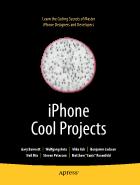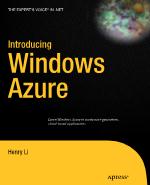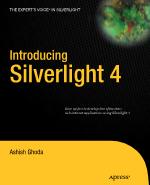 IPhone Cool Projects
IPhone Cool ProjectsAbout the Lead Author . xi About the Technical Consultant . xiii Acknowledgments .xv Introduction xvii WOLFGANG ANTE CHAPTER 1 Designing a Simple, Frenzic-Style Puzzle Game . 3 MIKE ASH CHAPTER 2 Mike Ash’s Deep Dive Into Peer-to-Peer Networking 29 GARY BENNETT CHAPTER 3 Doing Several Things at Once: Performance Enhancements with Threading . 57 MAT...
 234 trang | Chia sẻ: tlsuongmuoi | Ngày: 18/04/2013 | Lượt xem: 2425 | Lượt tải: 0
234 trang | Chia sẻ: tlsuongmuoi | Ngày: 18/04/2013 | Lượt xem: 2425 | Lượt tải: 0 PL/SQL User’s Guide and Reference - Phần 8
PL/SQL User’s Guide and Reference - Phần 8Keyword and Parameter Description cursor_name This identifies an explicit cursor previously declared within the current scope. datatype This is a type specifier. For the syntax of datatype, see "Constants and Variables" on page 11-33. db_table_name This identifies a database table (or view) that must be accessible when the declaration is ...
 48 trang | Chia sẻ: tlsuongmuoi | Ngày: 18/04/2013 | Lượt xem: 2102 | Lượt tải: 0
48 trang | Chia sẻ: tlsuongmuoi | Ngày: 18/04/2013 | Lượt xem: 2102 | Lượt tải: 0 PL/SQL User’s Guide and Reference - Phần 7
PL/SQL User’s Guide and Reference - Phần 7Dynamic SQL supports all the SQL datatypes. So, for example, define variables and bind arguments can be collections, LOBs, instances of an object type, and refs. As a rule, dynamic SQL does not support PL/SQL-specific types. So, for example, define variables and bind arguments cannot be Booleans or index-by tables. The only exception is that a PL/S...
 60 trang | Chia sẻ: tlsuongmuoi | Ngày: 18/04/2013 | Lượt xem: 2062 | Lượt tải: 0
60 trang | Chia sẻ: tlsuongmuoi | Ngày: 18/04/2013 | Lượt xem: 2062 | Lượt tải: 0 PL/SQL User’s Guide and Reference - Phần 5
PL/SQL User’s Guide and Reference - Phần 5User-Defined Exceptions PL/SQL lets you define exceptions of your own. Unlike predefined exceptions, user-defined exceptions must be declared and must be raised explicitly by RAISE statements. Declaring Exceptions Exceptions can be declared only in the declarative part of a PL/SQL block, subprogram, or package. You declare an exception by introduci...
 63 trang | Chia sẻ: tlsuongmuoi | Ngày: 18/04/2013 | Lượt xem: 2166 | Lượt tải: 0
63 trang | Chia sẻ: tlsuongmuoi | Ngày: 18/04/2013 | Lượt xem: 2166 | Lượt tải: 0 PL/SQL User’s Guide and Reference - Phần 4
PL/SQL User’s Guide and Reference - Phần 4Using Cursor FOR Loops In most situations that require an explicit cursor, you can simplify coding by using a cursor FOR loop instead of the OPEN, FETCH, and CLOSE statements. A cursor FOR loop implicitly declares its loop index as a %ROWTYPE record, opens a cursor, repeatedly fetches rows of values from the result set into fields in the record, an...
 23 trang | Chia sẻ: tlsuongmuoi | Ngày: 18/04/2013 | Lượt xem: 2224 | Lượt tải: 0
23 trang | Chia sẻ: tlsuongmuoi | Ngày: 18/04/2013 | Lượt xem: 2224 | Lượt tải: 0 PL/SQL User’s Guide and Reference - Phần 3
PL/SQL User’s Guide and Reference - Phần 3Defining and Declaring Collections To create collections, you define a collection type, then declare collections of that type. You can define TABLE and VARRAY types in the declarative part of any PL/SQL block, subprogram, or package. For nested tables, use the syntax TYPE type_name IS TABLE OF element_type [NOT NULL]; and for varrays, use the follo...
 Chia sẻ: tlsuongmuoi | Ngày: 18/04/2013 | Lượt xem: 2206 | Lượt tải: 0
Chia sẻ: tlsuongmuoi | Ngày: 18/04/2013 | Lượt xem: 2206 | Lượt tải: 0 PL/SQL User’s Guide and Reference - Phần 2
PL/SQL User’s Guide and Reference - Phần 2National Character Types The widely used one-byte ASCII and EBCDIC character sets are adequate to represent the Roman alphabet, but some Asian languages, such as Japanese, contain thousands of characters. These languages require two or three bytes to represent each character. How does Oracle deal with such dissimilar languages? Oracle provides Nati...
 Chia sẻ: tlsuongmuoi | Ngày: 18/04/2013 | Lượt xem: 2170 | Lượt tải: 0
Chia sẻ: tlsuongmuoi | Ngày: 18/04/2013 | Lượt xem: 2170 | Lượt tải: 0 PL/SQL User’s Guide and Reference - Phần 1
PL/SQL User’s Guide and Reference - Phần 1Contributors: Dave Alpern, Chandrasekharan Iyer, Ervan Darnell, Ken Jacobs, Sanjay Kaluskar, Sanjay Krishnamurthy, Janaki Krishnaswamy, Neil Le, Kannan Muthukkaruppan, Shirish Puranik, Chris Racicot, Ken Rudin, Usha Sangam, Ajay Sethi, Guhan Viswanathan The Programs (which include both the software and documentation) contain proprietary information...
 Chia sẻ: tlsuongmuoi | Ngày: 18/04/2013 | Lượt xem: 2396 | Lượt tải: 0
Chia sẻ: tlsuongmuoi | Ngày: 18/04/2013 | Lượt xem: 2396 | Lượt tải: 0 Introducing Windows Azure
Introducing Windows AzureContents v ■Foreword . x ■About the Author xiii ■About the Technical Reviewer xiv ■Acknowledgments . xv ■Introduction xvi ■Chapter 1: Create Cloud Table Storage 1 ■Chapter 2: Access Cloud Table Storage . 25 ■Chapter 3: Working with Cloud Queue and Blob Storage 67 ■Chapter 4: Windows Azure Application Integration Using WCF . 113 ■Chapter 5: Azure .N...
 351 trang | Chia sẻ: tlsuongmuoi | Ngày: 18/04/2013 | Lượt xem: 2474 | Lượt tải: 0
351 trang | Chia sẻ: tlsuongmuoi | Ngày: 18/04/2013 | Lượt xem: 2474 | Lượt tải: 0 Introducing Silverlight 4
Introducing Silverlight 4Contents . iv About the Author . xvii About the Technical Reviewer . xviii Acknowledgments . xix Introduction xx PART 1 Introduction to Silverlight .1 Chapter 1: Introducing Silverlight 3 Cross-Platform Frameworks 4 Qt 4 The Java Platform . 4 Adobe Flash/Flex/AIR 5 Microsoft ASP.NET AJAX 5 Microsoft Silverlight . 5 The History of Si...
 745 trang | Chia sẻ: tlsuongmuoi | Ngày: 18/04/2013 | Lượt xem: 2632 | Lượt tải: 0
745 trang | Chia sẻ: tlsuongmuoi | Ngày: 18/04/2013 | Lượt xem: 2632 | Lượt tải: 0


